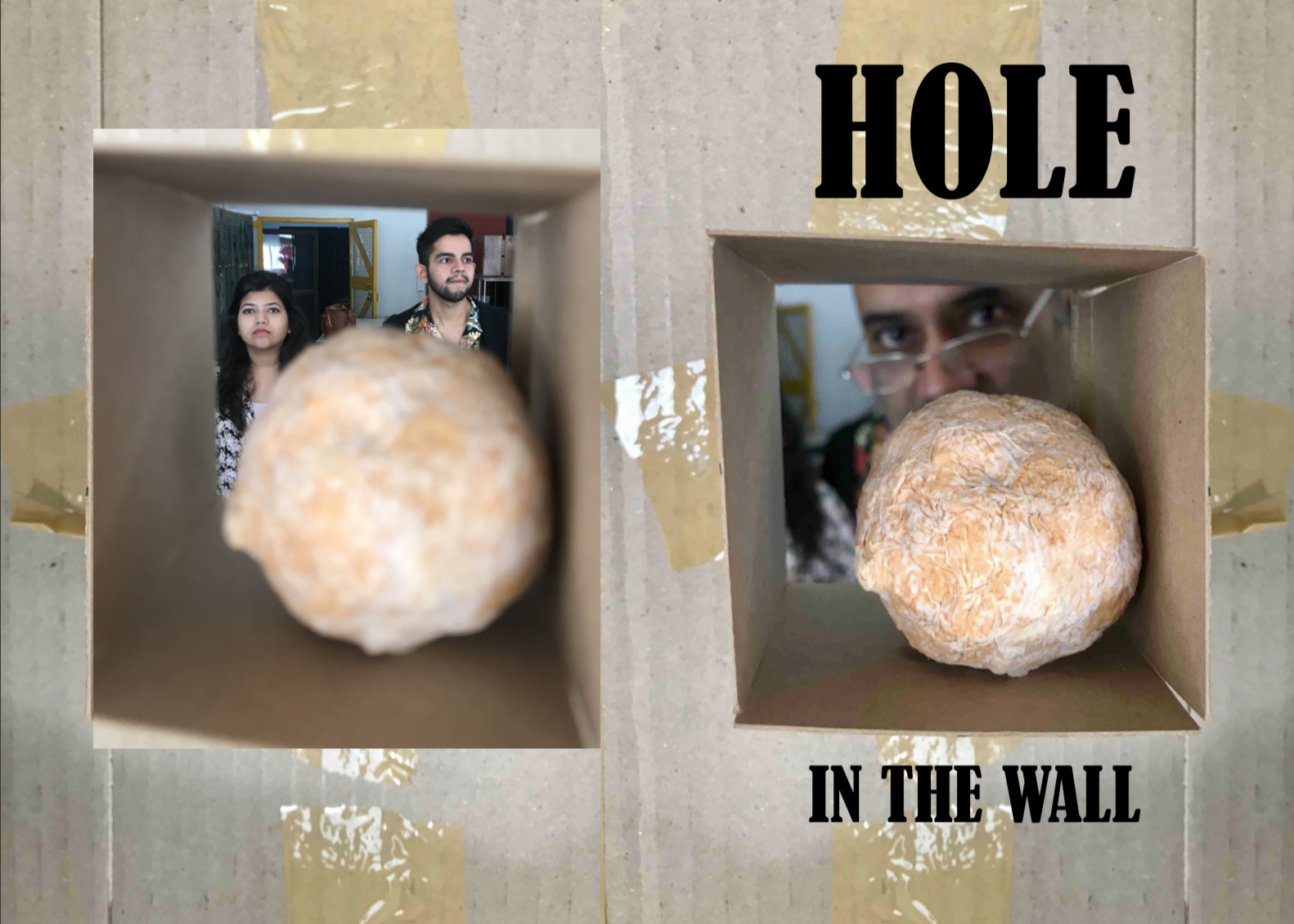Background
‘Hole in the wall’ is a term commonly used across North America. It refers to a small dingy bar, shop, or restaurant. These usually do not have the most well curated atmosphere, but serve some of the most delicious food. Taken quite literally, holes in walls can be built to encourage curiosity. The Dal Baati is a traditional item of Rajasthani cuisine. A crisp, dry wheat pastry encases a spicy, crumbly lentil mixture that dances on one’s tongue. The pastry is filled with the tantalizing mixture and molded by hand. It is then carefully placed in an open coal fire on the desert ground, encased by bricks. From the beginning, the Baati belongs to the brick, thus linking food and architecture.
From crispy and crunchy to soft and watery, it is many personalities into one. It has homely colors making me want to stay yet keep on opening thousands of windows that lie ahead. The different visuals it offers take me to different spaces, a home, a fort, a desert and a busy street… Every once a while I find a flavor that takes me straight back to one particular memory making almost tangible, while the sounds I hear make me want to play around with the food instead of just eating it.
– Unmesha Nag, Academy of Architecture, Mumbai.
Gestures for Giving Back
A simple brick wall is designed to bring hole in the wall to life with the use of carefully sized fenestrations. These are not unknown to Rajasthani architecture – they can be seen in all the traditional buildings. Not only do they help ventilating the hot and dry spaces due to local climate, but also act as playful peepholes. The brick wall divides the makers and the eaters and passersby. As the maker carefully creates the crisp Baatis, the passersby can peep through the openings on the wall and observe. Once cooked on the smoky, open fire, the ready-to-eat pastries are placed into these fenestrations. Again, the Baati belongs to the Brick. Consumers can reach out, pick a ready Baati and savor it. The chefs interact with the consumers, pour melted ghee over the pastry and serve it with piping hot daal (lentils). Then, a conversation and new connection begins brewing.











 The Baati Wall is an interactive installation designed and built by the students of the Academy of Architecture, Mumbai as part of an intensive Food+Architecture Workshop. See concept drawings here. Contact us to design a workshop for your students.
The Baati Wall is an interactive installation designed and built by the students of the Academy of Architecture, Mumbai as part of an intensive Food+Architecture Workshop. See concept drawings here. Contact us to design a workshop for your students.

